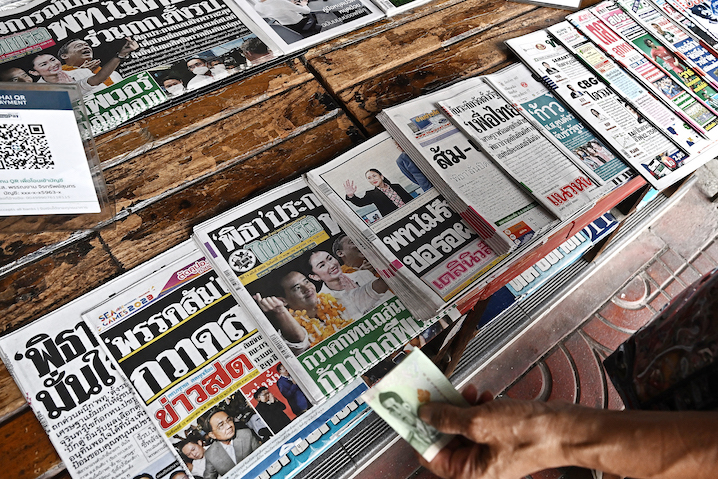Traditional Media’s Surprising Role in Fake News Dissemination in Thailand
A recent study conducted in Thailand has unearthed a counterintuitive finding regarding the spread of fake news: individuals who primarily rely on traditional media for political information are more inclined to share fake news compared to their counterparts who favor online media. This revelation challenges the prevailing notion that social media platforms are the primary culprits in the dissemination of misinformation. The study, based on a nationwide survey conducted in 2023, delves into the intricate relationship between media consumption habits and susceptibility to disinformation, offering valuable insights into the evolving media landscape in Thailand.
The research, conducted by Surachanee Sriyai and Akkaranai Kwanyou, employed a stratified random sampling method to ensure a representative sample of 1,675 eligible voters across various demographics. Participants were asked to assess the credibility of fake news posts and indicate their likelihood of sharing such information. Additionally, they were questioned about their primary source of political information, allowing researchers to analyze the correlation between media influence and fake news engagement.
The study uncovered a statistically significant link between the preferred media outlet and the willingness to share fake news. While both traditional and online media consumers demonstrated comparable levels of belief in fake news, those influenced by traditional media showed a greater propensity to share it. This finding is particularly intriguing given the widespread concern over social media’s role in amplifying disinformation.
The researchers hypothesize that several factors might contribute to this unexpected outcome. One possibility is the varying quality of information within traditional media. While established news channels often adhere to journalistic standards, commentary and analysis segments can sometimes present biased or sensationalist viewpoints, potentially influencing viewers’ willingness to share unverified information. Additionally, the study’s limitations, such as the inability to pinpoint specific news outlets within traditional media, prevent a comprehensive evaluation of media quality’s impact on disinformation susceptibility.
Another critical aspect to consider is the demographic divide in media consumption. The study revealed that older individuals tend to rely more on traditional media, while younger demographics gravitate towards online sources. This generational gap could influence the observed difference in fake news sharing behavior. Younger audiences, accustomed to the constant flow of information online, might be more discerning and less likely to share unverified content.
The study’s findings also challenge some assumptions about the relationship between media influence and belief in fake news. Surprisingly, there was no statistically significant link between the perceived influence of a media outlet and the belief in the veracity of fake news. This suggests that the credibility assessment of information is less dependent on the media source and more on individual biases or pre-existing beliefs.
The research highlights the need for further investigation into the dynamics of disinformation spread. The limitations of this study, including the inability to control for other variables such as gender, age, and income using regression analysis, underscore the complexity of this issue. Future research should explore these variables and delve deeper into the specific content consumed within traditional media to gain a more nuanced understanding of the factors driving fake news sharing behavior.
The study’s findings have significant implications for media literacy initiatives in Thailand. While efforts to combat online disinformation are crucial, the unexpected role of traditional media necessitates a broader approach. Educating the public about critical thinking, source evaluation, and the potential biases present in both traditional and online media is essential to building a more resilient information ecosystem. Furthermore, a more nuanced understanding of the mechanisms by which both traditional and social media affect the spread of fake news needs to be fostered to devise effective strategies for combating it. The research also suggests that media organizations, both traditional and online, have a responsibility to promote responsible information sharing and combat the spread of fake news through fact-checking and responsible reporting. By acknowledging the complexities of media influence and its interplay with individual biases, Thailand can take meaningful steps towards mitigating the detrimental effects of disinformation.


